Engineering temperature sensitive live attenuated influenza vaccines from emerging viruses
- PMID: 22449422
- PMCID: PMC3595159
- DOI: 10.1016/j.vaccine.2012.03.025
Engineering temperature sensitive live attenuated influenza vaccines from emerging viruses
Abstract
The licensed live attenuated influenza A vaccine (LAIV) in the United States is created by making a reassortant containing six internal genes from a cold-adapted master donor strain (ca A/AA/6/60) and two surface glycoprotein genes from a circulating/emerging strain (e.g., A/CA/7/09 for the 2009/2010 H1N1 pandemic). Technologies to rapidly create recombinant viruses directly from patient specimens were used to engineer alternative LAIV candidates that have genomes composed entirely of vRNAs from pandemic or seasonal strains. Multiple mutations involved in the temperature-sensitive (ts) phenotype of the ca A/AA/6/60 master donor strain were introduced into a 2009 H1N1 pandemic strain rA/New York/1682/2009 (rNY1682-WT) to create rNY1682-TS1, and additional mutations identified in other ts viruses were added to rNY1682-TS1 to create rNY1682-TS2. Both rNY1682-TS1 and rNY1682-TS2 replicated efficiently at 30°C and 33°C. However, rNY1682-TS1 was partially restricted, and rNY1682-TS2 was completely restricted at 39°C. Additionally, engineering the TS1 or TS2 mutations into a distantly related human seasonal H1N1 influenza A virus also resulted pronounced restriction of replication in vitro. Clinical symptoms and virus replication in the lungs of mice showed that although rNY1682-TS2 and the licensed FluMist(®)-H1N1pdm LAIV that was used to combat the 2009/2010 pandemic were similarly attenuated, the rNY1682-TS2 was more protective upon challenge with a virulent mutant of pandemic H1N1 virus or a heterologous H1N1 (A/PR/8/1934) virus. This study demonstrates that engineering key temperature sensitive mutations (PB1-K391E, D581G, A661T; PB2-P112S, N265S, N556D, Y658H) into the genomes of influenza A viruses attenuates divergent human virus lineages and provides an alternative strategy for the generation of LAIVs.
Copyright © 2012 Elsevier Ltd. All rights reserved.
Figures
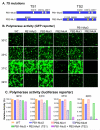
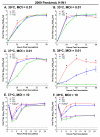

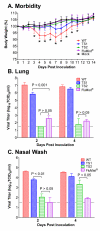
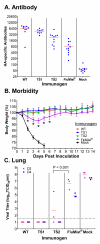
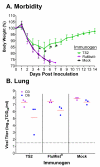
Similar articles
-
Reversion of Cold-Adapted Live Attenuated Influenza Vaccine into a Pathogenic Virus.J Virol. 2016 Sep 12;90(19):8454-63. doi: 10.1128/JVI.00163-16. Print 2016 Oct 1. J Virol. 2016. PMID: 27440882 Free PMC article.
-
Modifications in the polymerase genes of a swine-like triple-reassortant influenza virus to generate live attenuated vaccines against 2009 pandemic H1N1 viruses.J Virol. 2011 Jan;85(1):456-69. doi: 10.1128/JVI.01503-10. Epub 2010 Oct 20. J Virol. 2011. PMID: 20962084 Free PMC article.
-
The temperature-sensitive and attenuation phenotypes conferred by mutations in the influenza virus PB2, PB1, and NP genes are influenced by the species of origin of the PB2 gene in reassortant viruses derived from influenza A/California/07/2009 and A/WSN/33 viruses.J Virol. 2014 Nov;88(21):12339-47. doi: 10.1128/JVI.02142-14. Epub 2014 Aug 13. J Virol. 2014. PMID: 25122786 Free PMC article.
-
Influenza virus vaccine live intranasal--MedImmune vaccines: CAIV-T, influenza vaccine live intranasal.Drugs R D. 2003;4(5):312-9. doi: 10.2165/00126839-200304050-00007. Drugs R D. 2003. PMID: 12952502 Review.
-
Live attenuated pandemic influenza vaccine: clinical studies on A/17/California/2009/38 (H1N1) and licensing of the Russian-developed technology to WHO for pandemic influenza preparedness in developing countries.Vaccine. 2011 Jul 1;29 Suppl 1:A40-4. doi: 10.1016/j.vaccine.2011.04.122. Vaccine. 2011. PMID: 21684428 Review.
Cited by
-
Why is temperature sensitivity important for the success of common respiratory viruses?Rev Med Virol. 2021 Jan;31(1):1-8. doi: 10.1002/rmv.2153. Epub 2020 Aug 10. Rev Med Virol. 2021. PMID: 32776651 Free PMC article. Review.
-
A Live Attenuated Influenza Vaccine Elicits Enhanced Heterologous Protection When the Internal Genes of the Vaccine Are Matched to Those of the Challenge Virus.J Virol. 2020 Jan 31;94(4):e01065-19. doi: 10.1128/JVI.01065-19. Print 2020 Jan 31. J Virol. 2020. PMID: 31748399 Free PMC article.
-
Relating plaque morphology to respiratory syncytial virus subgroup, viral load, and disease severity in children.Pediatr Res. 2015 Oct;78(4):380-8. doi: 10.1038/pr.2015.122. Epub 2015 Jun 24. Pediatr Res. 2015. PMID: 26107392 Free PMC article.
-
Reversion of Cold-Adapted Live Attenuated Influenza Vaccine into a Pathogenic Virus.J Virol. 2016 Sep 12;90(19):8454-63. doi: 10.1128/JVI.00163-16. Print 2016 Oct 1. J Virol. 2016. PMID: 27440882 Free PMC article.
-
Comparative Study of the Temperature Sensitive, Cold Adapted and Attenuated Mutations Present in the Master Donor Viruses of the Two Commercial Human Live Attenuated Influenza Vaccines.Viruses. 2019 Oct 10;11(10):928. doi: 10.3390/v11100928. Viruses. 2019. PMID: 31658679 Free PMC article.
References
-
- World Health Organization [2009 Apr 1];Influenza (Seasonal) Fact sheet 211. :211. http://www.who.int/mediacentre/factsheets/fs211/en/
-
- Cox RJ, Brokstad KA, Ogra P. Influenza virus: immunity and vaccination strategies. Comparison of the immune response to inactivated and live, attenuated influenza vaccines. Scand J Immunol. 2004 Jan;59(1):1–15. - PubMed
-
- Wareing MD, Tannock GA. Live attenuated vaccines against influenza; an historical review. Vaccine. 2001 May 14;19(25-26):3320–30. - PubMed
-
- Zhu W, Higgs BW, Morehouse C, et al. A whole genome transcriptional analysis of the early immune response induced by live attenuated and inactivated influenza vaccines in young children. Vaccine. 2010 Apr 1;28(16):2865–76. - PubMed
Publication types
MeSH terms
Substances
Grants and funding
LinkOut - more resources
Full Text Sources
Other Literature Sources
Medical
Research Materials
Miscellaneous

